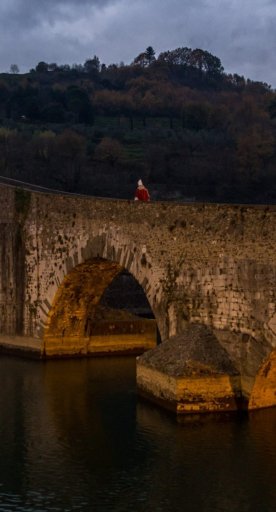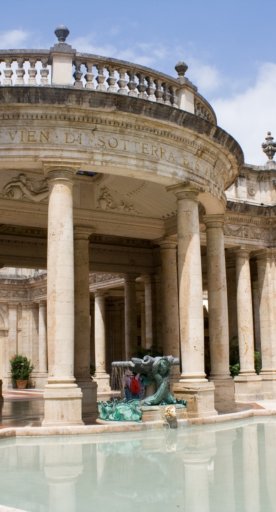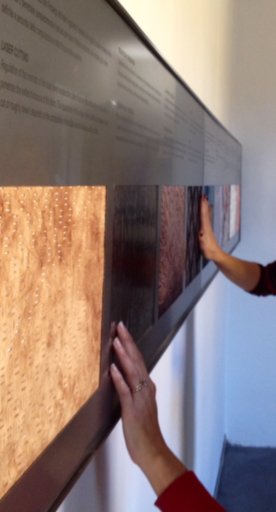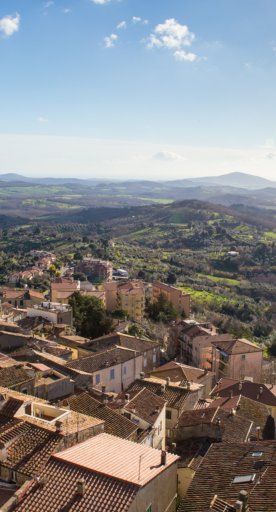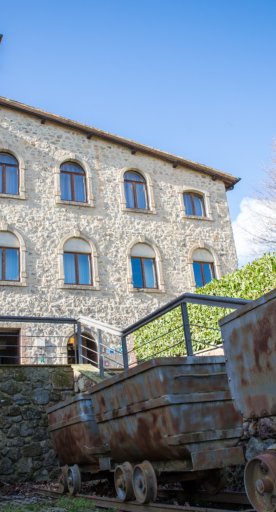Florence: for free!
In Florence art is everywhere and here is a list of free things to see and do in the city
Florence is beautiful because art is everywhere you look (remember, it’s the “cradle of the Renaissance”!) and even just wandering around, along its beautiful streets, admiring its monuments represent a memorable experience. And it doesn't need much money! If you are looking for some tips about what to see and do in Florence with a low budget, you'll be surprised.
There are many things to grasp, you just have to make your choice depending on what you prefer. Read our list (and a map, at the bottom of the page), pick up some ideas and don't forget to let us know what you think!
-
1.Churches
-
2.Refectories (Cenacoli)
-
3.Museums and Palaces
-
4.Going around
Churches

Basilica di Santa Maria del Fiore
The entrance to the Cathedral is free. On the contrary, if you want to climb up on the top of the Cupola or the adjacent bell tower built by Giotto there's a ticket to buy. You can even take a unique ticket to visit, in 48 hours, all the monuments of the complex.
Orsanmichele
This beautiful church, a few steps away from the Cathedral, was originally a market, with a loggia at ground level and a granary above. The loggia was bricked up in 1367-1380 and Orsamichele became the church of the crafts and trade guilds, which embellished the outer walls with statues of their patron saints. On the first floor, there is a museum with some of the original sculptures, which are considered to be milestones of Renaissance sculpture (Via dell'Arte della Lana, 3)
Santa Trinita
The Holy Trinity church was built in the late 11th century, enlarged in the 14th, and altered quite a bit in the 17th century; it retains traces of the 14th-century decoration and some great works of art, including frescoes by Domenico Ghirlandaio that show views of Florence and portraits of historical figures. The 16th-century façade is by Buontalenti, but the counter-façade is still part of the original one, built in the 11th century (Piazza Santa Trinita, Florence)
San Miniato al Monte
A 11th- to 13th-century church in the Romanesque style (one of the oldest in Florence) that dominates the southern hill of the city. The interior has a mosaic from the 12th century and a raised presbytery over a crypt, decorated with frescoes by Taddeo Gaddi; the nave has a patterned floor (1207) and leads up to a freestanding chapel by Michelozzo (1448). Next to the church is a beautiful, old cemetery, with grand Neo-Gothic and Neo-Renaissance tombs. Walk up to the church early in the morning for a good dose of fresh, cool air and enjoy the view (Via delle Porte Sante, 34, 50125 Firenze)
Santa Felicita
Between Ponte Vecchio and Piazza Pitti, located in a small square to the left (so small you might miss it!) is this tiny Renaissance church with a chapel (to the right of the entrance) that has two important masterpieces by Pontormo: the Deposition and the Annunciation. The chapel was used by the Lorraine Grand Dukes, who would attend Mass from the Vasari Corridor!
Santissima Annunziata
Piazza Santissima Annunziata A very “Florentine” church still used for society weddings. It was founded in 1250 and enlarged several times (the portico was added in 1601). The entrance is through the Chiostrino dei Voti (Little Cloister of the Vows), which has fine frescoes by Pontormo, Andrea del Sarto and others. Another cloister is known as the Chiostri dei Morti (The Cloiser of the Dead) and contains a famous Madonna del Sacco by del Sarto. The Baroque interior has a small temple on the left, which houses an image believed to be miraculous – the Annunciation by an unknown 14th-century artist - because, according to legend, the face of the Virgin was painted by an angel.
Santo Spirito
Piazza Santo Spirito, 30 It’s often closed but if you happen to find it open … go inside! The Church of the Holy Spirit, begun by Brunelleschi in1444 and completed by others, is one of the purest examples of Renaissance architecture.
Ognissanti
Borgo Ognissanti, 42 This Baroque church located in a large piazza that looks onto the Arno river has two detached frescoes (taken off the wall for restoration but put back in their original location) by Ghirlandaio and Botticelli (the latter of which was buried there). The church was altered significantly in the 17th-18th centuries; only the bell tower survives from the 13th-century.
Refectories (Cenacoli)
Florence boasts numerous convents with frescoes of the Last Supper in the refectory (Cenacolo). These are free to visit:
Cenacolo di Sant’ Apollonia
Via XXVII Aprile 1, 50129 Firenze The nunnery of Sant’Apollonia, near Piazza San Marco, has a strange (and beautiful) fresco by Andrea del Castagno of the Last Supper with the Crucifixion above. It was discovered only in the Napoleonic era when the convents were “suppressed” or closed. The museum also exhibits other detached frescoes.
Cenacolo di San Salvi
Via di San Salvi 16, 50135 Firenze In 1511-1527 Andrea del Sarto painted a Last Supper, considered his ultimate masterpiece, at this out-of-the-way convent in a residential neighborhood (reachable by bus). The museum contains other works from this period.
Cenacolo di Ognissanti
Via Borgo Ognissanti 42, 50123 Firenze It has a Last Supper by Ghirlandaio from 1488 and also conserves its original hand-washing station. It is next to the church, mentioned above.
Cenacolo del Fuligno
Via Faenza 42, 50123 Firenze This last supper, attributed to Perugino, is very much off the tourist track (even if it is only a five minute walk from the station, Via Faenza). Aside from the fresco, works by of Tuscan artists influenced by Perugino are also on show.
Chiostro dello Scalzo
Via Cavour 69, 50123 Firenze. The patron saint of Florence, John the Baptist, is the subject of the small, quiet cloiser near Piazza San Marco. Andrea del Sarto frescoed the walls around 1520 with scenes from the life of John the Baptist. The cycle is considered one of his masterpieces.
Museums and Palaces
Rodolfo Siviero Museum
Rodolfo Siviero was a keen art collector (he was known as the "James Bond of the artworld" for his work in recovering a great number of works of art stolen from Italy during the Second World War). His house is a Neo-Renaissance building on the banks of the river Arno: Etruscan findings; Ancient Roman busts; 14th- and 15th-century wooden statues; Medieval paintings on gold backgrounds, Renaissance and Baroque pictures, bronzes, terra-cottas, liturgical objects, beautiful furniture; as well as a group of works of important Italian modern artists, such as Giorgio De Chirico, Giacomo Manzù, Ardengo Soffici, Pietro Annigoni, who were friends of Siviero.
Bigallo Museum
A tiny, tiny museum, next to the Duomo and Baptistry that houses some artistic “gems,” like a fresco depicting the city of Florence in 14th-century: the Madonna della Misericordia by Barnardo Daddi, which is the oldest representation of Florence in art.
Going around
As we said, just going around, wandering the charming, narrow streets of Florence, is already a unique experience itself. Just let yourself go by instinct, curiosity … and with a little help from us: here are a few tips!
Oblate Library
A beautiful public library, converted from an old convent. Reach the terrace at the top and let the view take your breath away!
Piazza della Signoria
Florence’s iconic central square contains some of the city’s finest sculptures. Inside the piazza, the Loggia dei Lanzi shelters a bronze sculpture of Perseus triumphantly holding Medusa’s head by Benvenuto Cellini, as well as two marble works from the late 1500s by Giambologna: Hercules Beating the Centaur Nessus and the Rape of the Sabine Women. But remember that the David standing in front of Palazzo Vecchio is just a replica of the original one!
Santa Maria Novella Old Pharmacy
You don’t need to buy something to visit this ancient pharmacy near the church of Santa Maria Novella. Just walk through the doors of this old pharmaceutical shop, established by Dominican friars in 1221: in their gardens, they cultivated medicinal herbs that were used to prepare medications and balms.
Oltrarno
Cross the Ponte Vecchio to reach the south side of the river: the Oltrarno is a calm and genuine neighborhood, full of artist studios and artisan workshops continuing centuries-old traditions, handicrafts and managing antiques stores.
Walls and Towers
Discover the city following the traces left by its ancient, high defense walls, doors and towers.
Gardens
From the Rose Garden to the Orticoltura, not to mention the Parco delle Cascine and the Stibbert Garden: have a look at our article "Free parks and gardens in Florence" to learn more. Last but not least, of course: Piazzale Michelangelo - the large panoramic terrace, where you can embrace Florence with your eyes.












